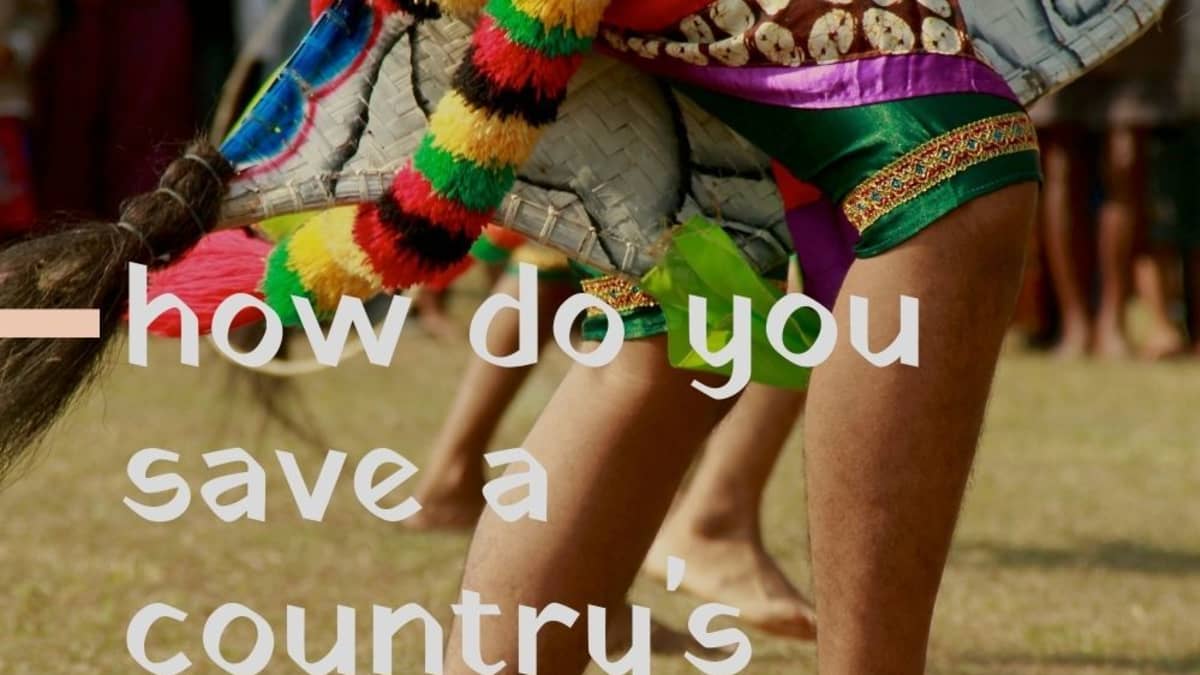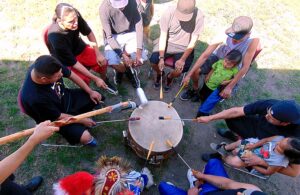Traditional dance transcends mere entertainment; it represents a vibrant tapestry that interweaves the stories, cultures, and values of communities across the globe, with origins tied deeply to oral traditions and ethnic practices.
From folk dances that honor cultural heritage to ritual dances imbued with profound significance, each form of traditional dance carries the weight of history, memory, and meaning. This exploration delves into the various types of traditional dance, examining their role in preserving cultural narratives, oral traditions, and the benefits they provide to individuals and communities alike.
These expressive art forms not only preserve history but also function as powerful mediums for storytelling, establishing connections between generations through movement, rhythm, and narrative techniques.
What Are The Different Types Of Traditional Dance?
.jpg_00.jpeg)
Traditional dance represents a significant component of cultural heritage, exhibiting a diverse array of dance forms, genres, and traditional practices that serve both to entertain and to preserve the history and identity of communities.
From folk dances that celebrate communal life to performance arts that express profound emotional narratives, traditional dance enhances our comprehension of ancestral traditions, historical contexts, and cultural significance. Each form possesses its own distinctive choreography, rhythm, and symbolic movements, acting as a potent medium for storytelling and social connection among various indigenous cultures.
These dance forms provide an immersive experience that links generations, promotes social cohesion, and fosters cultural transmission.
1. Folk Dances
Folk dances represent a significant expression of community identity, often grounded in local customs, folklore, and traditional costumes, serving as a medium for storytelling and cultural preservation.
These vibrant performances typically feature intricate movements and colorful costumes that not only entertain but also educate audiences about the history and traditions of the locality. For example, the evocative Irish step dance serves not merely as a demonstration of rhythm but also as a chronicle of the legacies inherent in Celtic heritage. Similarly, the lively Brazilian Samba embodies the spirit of Carnival, encapsulating narratives of celebration and resilience.
In various regions of India, traditional dances such as Kathak convey narratives through their graceful movements, expressive facial gestures, and intricate choreography, thereby nurturing community bonds. By engaging in these dances, individuals reinforce their connections to their cultural heritage, cultivate a sense of belonging, and participate in a living tradition.
2. Ritual Dances
Ritual dances play a fundamental role in cultural heritage, often performed during ceremonies that honor ancestral traditions and promote social connections among participants.
These expressive forms of movement serve as a medium for communal bonding and embody the history and beliefs of a community, creating a living narrative that is transmitted through generations, preserving both memory and historical context.
For instance, the Navajo Night Chant employs intricate footwork and symbolism to invoke healing and balance within the tribe, while Bharatanatyam of India conveys mythological stories through meticulous gestures, facial expressions, and rhythmic patterns.
Similarly, the Maasai warriors of Kenya express their culture through dynamic jumping dances that celebrate rites of passage, the warrior spirit, and community identity.
Each dance, with its distinct style, significance, and emotional resonance, encapsulates profound cultural values, establishing ritual dances as a vital component of cultural identity and continuity.
3. Social Dances
Social dances represent a dynamic form of expressive movement that encourages community interaction and embodies cultural identity through rhythm, shared experiences, and collective memory.
These vibrant communal practices not only facilitate personal connections but also reinforce collective memory, intertwining histories, narratives, and social cohesion that define the essence of a group.
Ritualistic dances, such as the African American step dance or the traditional Indian Garba, exemplify how social dance forms foster a sense of belonging, pride, and cultural reflection among participants.
Through performances at community gatherings or cultural festivals, these artistic expressions promote social cohesion, enabling individuals to navigate daily challenges, inspiring greater engagement, and highlighting identity preservation.
Ultimately, the significance of social dances resides in their capacity to unite diverse community members, fostering understanding and appreciation of unique cultural heritages.
4. Performance Dances
Performance dances serve as an artistic expression of cultural narratives, employing choreography to engage audiences and convey compelling stories through visual storytelling and performative traditions.
These dances frequently reflect the values, traditions, and histories of their originating communities, enabling performers to express complex emotions, experiences, and historical representations that transcend verbal communication.
For example, ballet, characterized by its refined movements and structured compositions, narrates timeless fairy tales, profound human experiences, and historical accuracy. In contrast, traditional African dance, defined by its rhythmic elements, communal participation, and dance rituals, celebrates significant life events and heritage through vibrant body language.
Similarly, the expressive quality of flamenco exemplifies the cultural fusion of Spain, utilizing intricate footwork, hand movements, and emotive storytelling to evoke themes of passion and pain.
Each of these styles demonstrates how various techniques and choreographic choices play a crucial role in fostering a deep connection between performers and their audience, ultimately underscoring the significance of cultural identity, artistic expression, and cultural preservation through the medium of dance.
How Does Traditional Dance Preserve History?
Traditional dance serves as an essential medium for the preservation of history, encapsulating historical narratives and cultural significance that transcend generations through the art of movement, storytelling techniques, and preservation techniques.
This performance art not only reflects the customs and identity of a culture but also functions as a living archive that conveys knowledge of ancestral traditions, social values, and identity preservation.
By embodying folklore, community rituals, and participatory culture, traditional dance fosters a sense of belonging and continuity, thereby ensuring that the legacy of cultural heritage is preserved for future generations.
1. Cultural Significance
The cultural significance of traditional dance lies in its capacity to articulate historical context, reflect the identity of a community, and utilize storytelling methods through expressive storytelling.
Through intricate movements and rhythmic patterns, traditional dance serves as a dynamic medium for the transmission of values, beliefs, cultural practices, and narratives from one generation to the next. For example, the vibrant Flamenco of Spain not only provides entertainment but also conveys stories of passion, resilience, and historical struggles.
Similarly, the Hula dance of Hawaii is deeply intertwined with folklore, spirituality, and narrative dance, offering insights into the connection between the people and their land and heritage.
These dances, along with many others, play a crucial role in preserving the essence of cultural narratives, ensuring that customs are honored, remembered, and passed down through intergenerational learning. They also foster a sense of pride and belonging among community members.
2. Passing Down Stories and Traditions
.jpg_01.jpeg)
The transmission of stories and traditions through traditional dance is a crucial element of cultural preservation, wherein oral history, dance as a storytelling medium, and historical representation converge to enhance collective memory.
These artistic expressions function not only as a form of entertainment but also as a living archive of a community’s heritage, identity, and traditional practices. In various cultures, specific dances serve as vessels for historical narratives.
For example, the hula from Hawaii intricately conveys tales of creation and deep ancestral connections through its graceful movements, accompanying chants, and emotive storytelling.
Similarly, Bharatanatyam from India often depicts stories from ancient scriptures, showcasing a rich tapestry of mythology, spirituality, and artistic expression. Additionally, Native American powwow dances commemorate historical events, honoring the resilience of their ancestors and using dance symbolism.
In this way, dance becomes a profound medium for communicating and preserving these essential stories, cultural narratives, and generational knowledge across generations.
3. Reflecting Cultural Values and Beliefs
Traditional dance serves as a reflection of the cultural values and beliefs inherent within a community, acting as an essential link to historical context, narrative structure, and the wisdom of tradition bearers who embody these practices.
Through rhythmic movements and expressive gestures, such dances communicate narratives, storytelling through dance, and identity expression that are fundamental to the identities of both individuals and larger social groups. This form of artistic expression not only provides entertainment but also serves to educate participants and audiences about ancestral customs, moral teachings, and life experiences that have been transmitted across generations, integrating cultural transmission and storytelling performance.
In various cultures, the elements of traditional dance convey communal values such as respect, hospitality, and resilience, often illuminating the struggles, triumphs, and folkloric traditions of their ancestors.
As the custodians of these ancient traditions continue to disseminate their knowledge, they play a pivotal role in ensuring that cultural heritage remains vibrant, relevant, and accurately documented through dance history in today’s diverse society.
What Are The Benefits Of Traditional Dance?
Participating in traditional dance provides a multitude of benefits that extend beyond mere physical fitness. It plays a significant role in enhancing mental and emotional well-being while promoting community building, social connections, and the preservation of art and culture.
Through rhythm and movement, participants engage in a distinctive form of artistic expression and cultural heritage that enriches their community identity. The immersive experiences offered by traditional dance ceremonies, which are often embedded in ethnic traditions and ritual practices, foster a sense of belonging and continuity, thereby strengthening intergenerational bonds within communities.
1. Physical Fitness
Participation in traditional dance significantly enhances physical fitness by incorporating dynamic movements and rhythmic patterns that promote overall health and well-being. This engaging form of activity not only improves strength and flexibility but also makes substantial contributions to cardiovascular health. Dance as a medium of cultural transmission effectively integrates physical and cultural practices.
For example, dance forms such as the energetic Irish jig or the spirited Bollywood dance involve intricate footwork and vigorous body movements, which help elevate heart rates and increase stamina. These folk dances are deeply rooted in their respective cultural contexts, adding layers of cultural significance to their physical benefits.
Traditional dances, including the West African sapo and the Hawaiian hula, provide opportunities for individuals to express themselves creatively while engaging in comprehensive full-body workouts. The joy derived from these cultural expressions not only enhances mental wellness but also fosters community connections. These dance forms serve as cultural preservation tools, demonstrating that the benefits of traditional dance extend well beyond physical fitness alone.
2. Mental and Emotional Well-being
Engaging in traditional dance significantly enhances mental and emotional well-being, serving as an effective outlet for emotional expression and a valuable means of stress relief within a culturally connected environment. This performance art provides a unique way to connect with one’s cultural heritage and community identity.
This distinctive form of expression not only enables individuals to convey their feelings in a secure setting but also promotes a profound sense of belonging and community. Through rhythmic movements and shared experiences, participants often become immersed in a rich tapestry of cultural heritage and oral traditions that deepen their identity.
The synchrony of body and spirit developed during these dances can lead to increased self-awareness and improved mood. Additionally, the communal nature of traditional dance reinforces social bonds, fostering connections that contribute to enhanced mental resilience and collective joy. This form of participatory culture strengthens social cohesion within communities.
3. Community Building
Traditional dance serves as a significant instrument for community building, promoting social cohesion and reinforcing cultural identity through shared experiences and collective memory. These communal storytelling practices help maintain and transmit vital cultural narratives.
It creates an environment where individuals gather to celebrate their heritage while establishing enduring connections. Each rhythmic movement and intricate step transcends mere artistic expression; it serves as a vehicle for narrating the stories and values that define the community’s identity. This practice of storytelling through dance plays a crucial role in cultural preservation.
During festivals and rituals, traditional dance frequently becomes a central element, uniting participants in a shared sense of purpose and belonging. As they partake in these time-honored practices, they contribute to a collective memory that strengthens their bonds and enhances their sense of belonging, fostering a vibrant atmosphere in which cultural traditions are preserved and transmitted across generations. These rituals serve as a powerful means of cultural transmission, ensuring the preservation of ancestral knowledge and dance history.
How Can Traditional Dance Be Used For Storytelling?
Traditional dance serves as a significant medium for storytelling, employing narrative dance techniques to communicate profound messages and cultural narratives through emotional expression and expressive movement.
Through the careful integration of choreography and rhythm, dancers have the ability to evoke historical narratives, cultural myths, and personal stories that resonate with audiences on various levels. These storytelling methods enhance the audience’s engagement and emotional connection with the performance.
This immersive experience of storytelling through movement fosters a unique connection between performers and the community, thereby reinforcing the importance of tradition and collective memory. Theatrical elements within the dance further enhance this emotive storytelling experience.
1. Depicting Historical Events and Legends
.jpg_10.jpeg)
Traditional dance serves as a powerful medium for depicting historical events and legends, thereby providing a dynamic method for communicating cultural narratives and preserving collective memory. This art form plays a vital role in historical representation and the preservation of cultural storytelling traditions.
These art forms stand as a living testament to the beliefs and experiences of communities, enabling them to honor their heritage effectively. For example, the Mexican Jarabe Tapatío conveys a narrative of love and folklore through its vibrant movements and colorful traditional costumes, symbolizing the essence of the Mexican people.
Similarly, the Hawaiian Hula not only functions as a form of storytelling but also serves as an oral history, celebrating deities, nature, and significant historical events, such as the great migrations across the Pacific. The dance lineage within Hula highlights its importance in historical accuracy and the preservation of art.
By embodying these narratives through movement, dance facilitates a deeper understanding and appreciation of the rich traditions and histories of the cultures it represents. This form of visual storytelling ensures the preservation of cultural practices and traditions.
2. Portraying Cultural Myths and Beliefs
Traditional dance serves as a profound representation of cultural myths and beliefs, enhancing the audience’s comprehension of the values and traditions that are fundamental to a community’s identity. This form of cultural storytelling is essential for maintaining community heritage and social storytelling practices.
These expressive art forms function as a crucial medium for community engagement, fostering a sense of belonging and continuity. Through vibrant choreography, intricate movements, and symbolic gestures, these dances encapsulate ancestral narratives that convey moral lessons and reflect community values. The symbolism inherent in these dance rituals underscores their cultural significance.
For instance, many indigenous dances incorporate elements of storytelling, wherein each gesture and movement carries substantial meaning, enabling performers to connect with their heritage while imparting wisdom to younger generations. These narrative techniques are crucial for the cultural reflection and transmission of generational knowledge.
By participating in these dance traditions, community members not only honor their cultural heritage but also reinforce the importance of collective narratives that unite them. This practice fosters identity preservation and the continuation of dance lineage within the community.
3. Sharing Personal and Community Stories
Traditional dance functions as a vital platform for conveying personal and communal narratives, facilitating connections among individuals through the intricate tapestry of cultural stories that characterize their heritage. These performative traditions are key to the preservation of art and culture.
These performances often express emotions and experiences that resonate profoundly with both the dancers and the audience. For example, the Maori haka serves not only as a warm welcome but also encapsulates the history and pride of the tribe, seamlessly blending personal valor with a collective identity. This dance as history approach showcases the importance of cultural heritage and identity formation.
Similarly, the vibrant storytelling inherent in the African American ring shout integrates individual histories with community resilience, transforming movement into a narrative that unites participants. These social storytelling performances highlight the intersection of tradition and modernity in dance evolution.
By embodying these narratives through rhythm and movement, traditional dance emerges as an essential medium for preserving cultural values and cultivating enduring connections within communities. This approach to storytelling performance underscores the significance of dance anthropology in understanding cultural narratives.
What Are Some Examples Of Traditional Dances That Tell Stories?
Numerous traditional dances across the globe function as impactful storytelling mediums, each possessing its unique cultural significance and historical context. These dance forms not only provide entertainment but also communicate deeply rooted legends, myths, and communal experiences that resonate through generations. The preservation of these art forms through dance documentation ensures their continued relevance and impact.
From the Hula dance of Hawaii to the Flamenco of Spain, each performance art encapsulates the essence of its respective culture and serves as a crucial connection to its heritage, thereby establishing themselves as integral components of dance festivals and cultural celebrations. These dance genres contribute to the broader understanding of art and culture.
1. Hula Dance from Hawaii
The Hula dance from Hawaii is a highly esteemed form of storytelling that employs expressive movement, deeply embedded in the cultural significance and traditions of the islands. This dance’s narrative structure and storytelling techniques are vital for maintaining its cultural relevance.
This art form serves as a vibrant medium for conveying the narratives and history of the Hawaiian people, effectively expressing emotions and experiences through gestures and rhythm. Each movement is meticulously designed to reflect specific stories, encompassing themes of love, nature, and ancestral heritage, thereby enabling performers to establish a connection with both the audience and their cultural roots. This form of identity expression is crucial for cultural preservation.
The intricate footwork, hand movements, and accompanying chants or songs coalesce to form a rich tapestry of meaning, evoking the spirit of the islands and fostering a sense of community. This interaction in dance enhances the overall impact of the performance.
By safeguarding these traditions, Hula not only celebrates cultural identity but also honors the past and inspires future generations. This process of heritage preservation ensures the continuity of these valuable cultural practices.
2. Flamenco Dance from Spain
Flamenco dance, originating from Spain, represents a profound cultural heritage characterized by its dynamic movements and emotional expression, which effectively convey narratives of passion, struggle, and celebration. This art form’s dance rituals and storytelling traditions are key to its enduring impact.
The intricate footwork, rhythmic clapping, and expressive arm movements create a rich tapestry of narrative that resonates profoundly with audiences. Each dancer offers their unique interpretation on stage, allowing their personal experiences to blend with traditional elements, thereby enriching the storytelling dimension of the performance. This dance’s historical context and emotional connection with the audience are vital for its cultural transmission.
This art form transcends mere entertainment; it functions as a powerful medium for articulating the complexities of life and longing, encapsulating the essence of human emotions deeply rooted in Spanish culture. The narrative structure of Flamenco is central to its ability to convey complex stories and emotions.
Through its vibrant costumes and musical accompaniment, Flamenco transforms the dancer’s body into a conduit for shared experiences, inviting spectators into a realm where each twirl conveys a narrative of ancestral pride and heartfelt emotion. This form of identity preservation ensures the continued relevance of Flamenco in contemporary society.
3. Bharatanatyam Dance from India
Bharatanatyam, a classical dance form originating from India, is esteemed for its intricate storytelling techniques that convey cultural narratives through expressive gestures and rhythmic footwork. This dance genre showcases the rich traditions and historical narratives of Indian culture, contributing to its preservation and evolution.
This dance form transcends the realm of movement, as it intricately combines facial expressions, known as abhinaya, with fluid body language to create a rich tapestry of emotions and narratives. Each gesture, or mudra, is not merely an artistic embellishment; it serves as a crucial element that enhances the narrative being portrayed.
The rhythmic components, characterized by precise footwork and intricate beats, further elevate the storytelling aspect, fostering a harmonious integration of sound and visual artistry.
Through its performances, audiences are immersed in a world steeped in mythology and tradition, bringing to life centuries of cultural heritage and spiritual significance. As such, Bharatanatyam offers a captivating experience for all who have the privilege of witnessing it.
4. Samba Dance from Brazil
.jpg_11.jpeg)
The samba dance from Brazil represents a vibrant cultural expression that articulates stories of joy, resilience, and community through its infectious rhythmic movements and lively performances.
This captivating dance form draws from a rich tapestry of African and Brazilian influences, showcasing not only the technical skill of the dancers but also the deep-rooted traditions that constitute the essence of Brazilian life. Each performance serves as a narrative, interweaving the history, struggles, and triumphs of the people, ultimately emphasizing the significance of unity and celebration within the community.
With its lively beats and dynamic steps, samba fosters participation, inviting individuals to engage in the collective spirit, thereby reinforcing social bonds and cultural pride that resonate throughout the nation.
Frequently Asked Questions
What is traditional dance and how does it preserve history and storytelling?
Traditional dance is a form of dance that has been passed down through generations and is deeply rooted in a culture’s history and traditions. This type of dance not only reflects a community’s beliefs, values, and customs, but also serves as a way to preserve their history and tell stories through movement, music, and costumes.
How do traditional dances reflect a community’s history?
Traditional dances often incorporate movements and choreography that have been passed down for centuries and have been used to celebrate important events and ceremonies in a community’s history. These dances may also incorporate traditional music and costumes that are representative of a specific time period or historical event, further preserving the community’s history.
Why is traditional dance important for preserving storytelling?
Traditional dance is a powerful form of storytelling as it allows for the retelling of important stories and legends through movement and expression. It also serves as a way to pass down oral histories and cultural traditions from one generation to the next, ensuring that these stories and traditions are not lost over time.
How does traditional dance serve as a cultural record?
Traditional dance is often used as a way to document a community’s history and serves as a record of their cultural practices, beliefs, and traditions. Through the preservation of traditional dances, future generations can learn about and connect with their cultural heritage.
What role do traditional dance performers play in preserving history and storytelling?
Performers of traditional dance are not only skilled dancers, but they also hold a great responsibility in preserving their community’s history and storytelling traditions. They are the keepers of their culture’s dances and are responsible for passing them down to future generations.
How can we support the preservation of traditional dance and its role in history and storytelling?
There are several ways to support the preservation of traditional dance, such as attending performances and festivals, learning about the history and significance of different dances, and supporting local cultural organizations that promote and preserve traditional dance. Additionally, showing respect and appreciation for traditional dance and its role in history and storytelling can help ensure its preservation for future generations.

My name is Bruno, I have been a writer for 5 years and I work with website creation. My goal is to provide true information to readers. In fact, on this site I write about cultures and traditions, which I have been passionate about since childhood.




